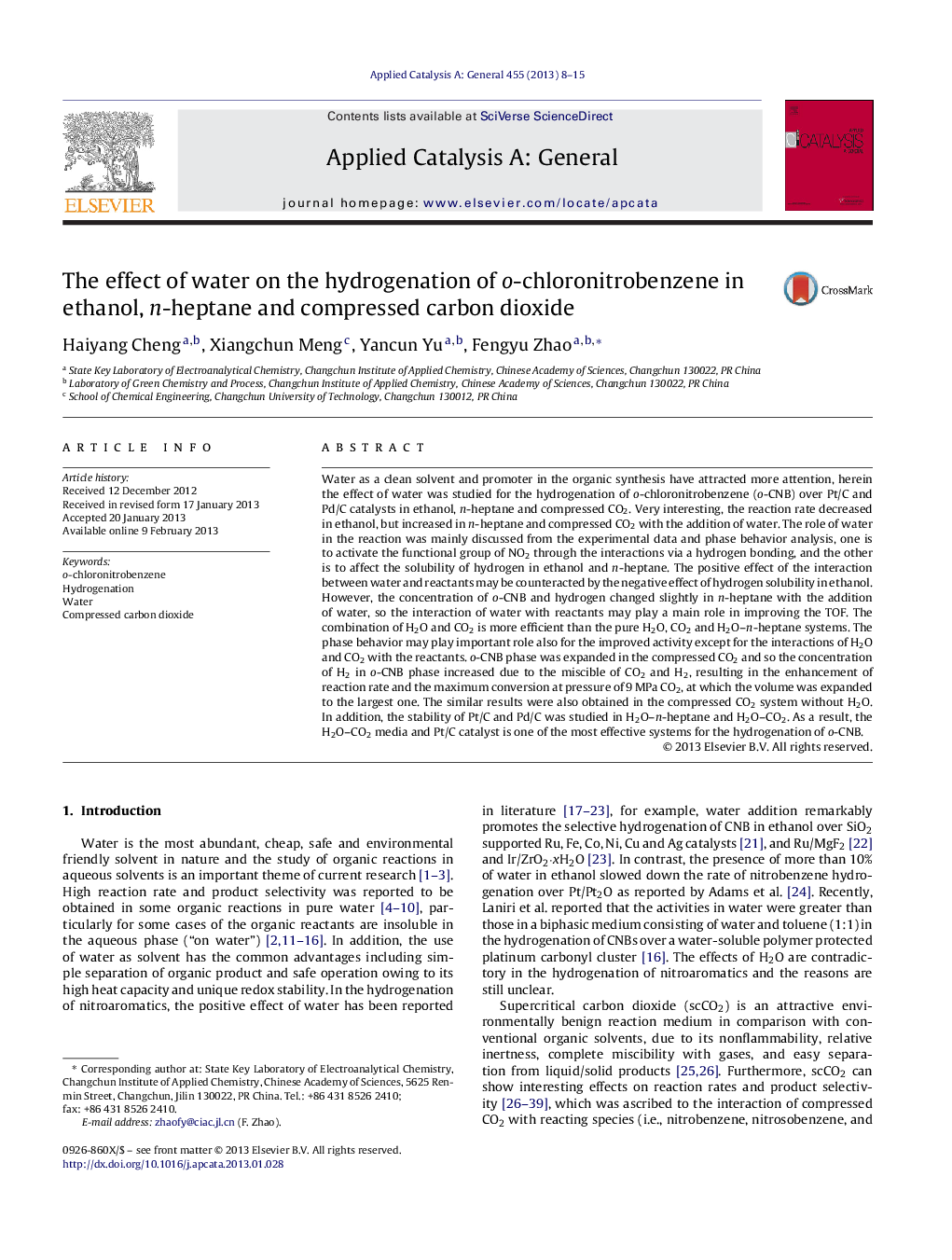| کد مقاله | کد نشریه | سال انتشار | مقاله انگلیسی | نسخه تمام متن |
|---|---|---|---|---|
| 40342 | 45851 | 2013 | 8 صفحه PDF | دانلود رایگان |

Water as a clean solvent and promoter in the organic synthesis have attracted more attention, herein the effect of water was studied for the hydrogenation of o-chloronitrobenzene (o-CNB) over Pt/C and Pd/C catalysts in ethanol, n-heptane and compressed CO2. Very interesting, the reaction rate decreased in ethanol, but increased in n-heptane and compressed CO2 with the addition of water. The role of water in the reaction was mainly discussed from the experimental data and phase behavior analysis, one is to activate the functional group of NO2 through the interactions via a hydrogen bonding, and the other is to affect the solubility of hydrogen in ethanol and n-heptane. The positive effect of the interaction between water and reactants may be counteracted by the negative effect of hydrogen solubility in ethanol. However, the concentration of o-CNB and hydrogen changed slightly in n-heptane with the addition of water, so the interaction of water with reactants may play a main role in improving the TOF. The combination of H2O and CO2 is more efficient than the pure H2O, CO2 and H2O–n-heptane systems. The phase behavior may play important role also for the improved activity except for the interactions of H2O and CO2 with the reactants. o-CNB phase was expanded in the compressed CO2 and so the concentration of H2 in o-CNB phase increased due to the miscible of CO2 and H2, resulting in the enhancement of reaction rate and the maximum conversion at pressure of 9 MPa CO2, at which the volume was expanded to the largest one. The similar results were also obtained in the compressed CO2 system without H2O. In addition, the stability of Pt/C and Pd/C was studied in H2O–n-heptane and H2O–CO2. As a result, the H2O–CO2 media and Pt/C catalyst is one of the most effective systems for the hydrogenation of o-CNB.
Figure optionsDownload high-quality image (210 K)Download as PowerPoint slideHighlights
► Water addition remarkably affected the reaction rate through hydrogen bonding.
► The improved activity is related to the phase behavior and interaction of CO2 and reactants.
► The maximum conversion showed at 9 MPa is about 2–4 times higher than that obtained without CO2.
► The H2O–CO2 media and Pt/C catalyst is the most effective catalytic system.
Journal: Applied Catalysis A: General - Volume 455, 30 March 2013, Pages 8–15